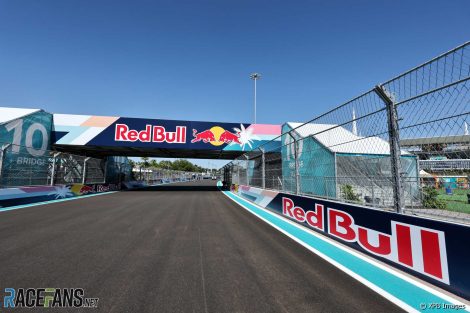When Formula 1 introduced its revolutionary technical regulations last year, transforming how its cars generate their critical aerodynamic downforce, it was supposed to herald in a new, exciting era of racing in the sport.
But after last weekend’s Azerbaijan Grand Prix featured little passing – in both the much-heralded sprint race and the grand prix – the question of whether F1’s latest generation of cars are failing in their mission to improve racing has been a big topic of conversation in the Miami Grand Prix paddock.
While the early feedback from drivers in 2022 was that it was indeed easier for them to follow rivals than in the previous generation of cars, that has not continued in 2023. Ferrari’s Charles Leclerc admitted “it’s a bit more difficult to follow in the low-speed corners” this season, “especially compared to the high speed.”
Leclerc’s Ferrari team mate, Carlos Sainz Jnr, agrees. Asked if he felt overtaking would be difficult around the Miami circuit this weekend, he offered a single word reply: “Yes.”
“I think as the races have come by with this generation of cars is getting quite bad to follow again,” Sainz explained. “So I don’t know how long it is going to last, this race-ability from these new generation of cars, because they are currently getting more and more tricky to follow.”
But what do the drivers think are the reasons why passing appears to be more difficult in season two of F1’s ground effect revolution, despite the field itself getting closer from the front to the rear?
Shorter DRS zones
Many in Formula 1 as well as the fans hoped the changes ushered in last year would make cars easier to follow and spell the beginning of the end for the controversial Drag Reduction System. The FIA has been trying to reduce the effectiveness of the overtaking aid this season by using data from last season and, in the case of Bahrain, Baku and Miami this weekend, shortening some DRS zones by moving the activation points further down straights.
The general consensus among drivers appears to be that, while few are fans of the device, DRS remains critical to racing this season.
“Where we’re racing, I think we need the extra DRS zones, to be more following closely,” said Alfa Romeo’s Zhou Guanyu. “Because most of the races have been DRS trains so far – especially for us, trying to clamp back on the field is almost impossible – unless…
Click Here to Read the Full Original Article at RaceFans…

